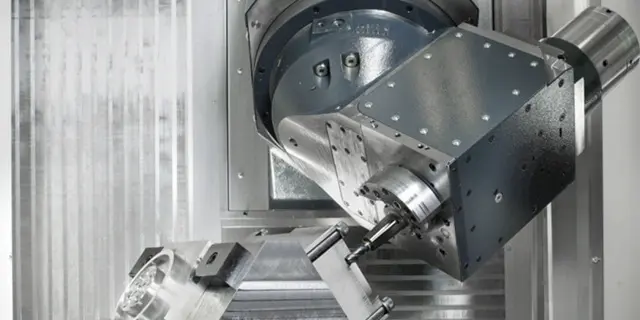When it comes to manufacturing, there are a few different ways that parts can be created. 3+2 machining and 5-axis machining are two of the most common methods. 5-axis machining is a manufacturing process that combines three linear axes with two rotational axes. 5 axis parts are typically more complex than those produced with 3+2 machining, and so require more time and effort to produce. 3+2 machining is suited for producing parts with irregular shapes, or for machining multiple sides of a part simultaneously. While 3+2 machining has many advantages, it also comes with some potential drawbacks. Here’s a look at the pros and cons of each type of machine tooling.
Table of Contents
What is 3+2 Machining?
3+2 Machining process involves first creating a three-dimensional model of the part to be milled. This model is then used to generate a toolpath that will guide the cutting tool as it removes material from the workpiece. The final step is to use a computer numerical control (CNC) machine to mill the part to the desired shape and size. 3+2 Machining is an efficient way to produce complex shapes with a high degree of accuracy. It is often used in the aerospace and medical industries, where parts must meet stringent tolerances.
3+2 machines are typically more expensive than those with fewer axes, and require specialized training to operate. In addition, 3+2 machining can produce large amounts of vibration, which can lead to tool wear and reduced accuracy over time. As a result, 5-axis machining is not always the best choice for every application.
3+2 Machining also is a time-consuming process, depending on the size and complexity of the project. The process involves taking a three-dimensional (3D) model of the desired object and breaking it down into a series of two-dimensional (2D) slices. These slices are then milled out of the desired material, and finally assembled to create the finished product.
While 3+2 Machining can be used to create a wide variety of objects, it is often used for custom projects where other methods would be too time-consuming or expensive. As a result, 3+2 Machining can be a great option for those who are willing to wait a little longer for their custom project.
What is 5-Axis Machining?
5-Axis Machining is a subtractive manufacturing process that involves custom milling a material to create complex shapes. Unlike traditional machining, which only uses three axes of motion, 5-Axis Machining uses all five axes to create custom parts and prototypes. This allows for greater flexibility and accuracy when creating custom shapes.
The process begins with a computer-aided design (CAD) file that is imported into the machining software. The software then calculates the toolpaths needed to create the desired shape. Once the toolpaths are generated, the machine automatically moves the cutting tools to create the custom shape. 5-Axis Machining is commonly used in the aerospace and medical industries due to its ability to create complex shapes from a variety of materials.
In addition, 5-axis machining can be used to create parts with highly complicated geometries. As a result, it is an essential tool for many manufacturers who require custom parts that cannot be produced using traditional methods.

While 5-axis machining has many advantages, it also comes with some potential drawbacks. 5-axis machines are typically more expensive than those with fewer axes, and require specialized training to operate. In addition, 5-axis machining can produce large amounts of vibration, which can lead to tool wear and reduced accuracy over time. As a result, 5-axis machining is not always the best choice for every application.
Difference Between 3+2 and 5-Axis CNC Machining
3+2 axis machining is a type of computer numerical control (CNC) technology that uses three linear axes and two rotary axes. This allows for more complex workpieces to be machined in a single setup, which reduces both production time and costs. 5-axis machining is an extension of this technology that adds two more axes, giving the machine a total of five axes of motion. This allows for even more complex shapes to be machined, but at a higher cost.
5-axis custom milling, on the one hand, uses five axes of motion (X, Y, Z, A, and B). This allows for even more complex shapes to be milled, but it also means that the setup time is even longer. In addition, 5-axis custom milling is even more expensive than 3+2 custom milling. However, the increased complexity of the shapes that can be milled is often worth the extra cost.
On the other hands, 3+2 axis machines are typically better suited for large projects where speed is more important than accuracy. That’s because these machines can only move in three directions (up/down, left/right, and forward/backward), so they can’t make very intricate cuts. However, they can make cuts quickly and easily, which makes them ideal for projects that require a lot of material to be removed quickly.

What’s more, 5-axis machines are designed for more precise work. That’s because they can move in five directions, so they can make very detailed cuts.
So, when choosing a custom milling machine, it’s important to consider the size and complexity of the project as well as the desired turnaround time. If speed is a primary concern, a 3+2 axis machine is probably the way to go. But if accuracy is more important, a 5-axis machine will get the job done right.

